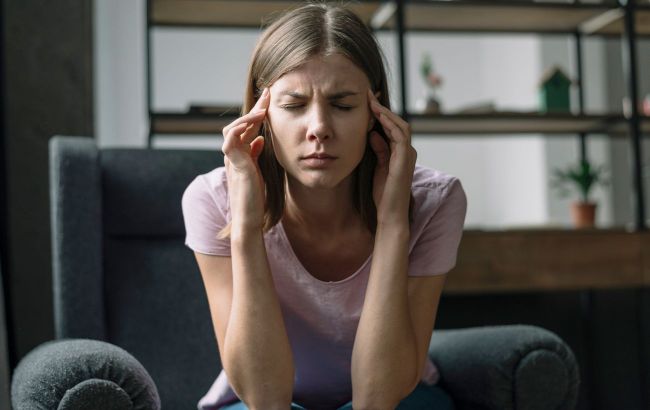How to survive a migraine attack: These rules will definitely help you
 Illustrative photo (Photo: Freepik)
Illustrative photo (Photo: Freepik)
Migraine is one of the most common neurological disorders, affecting every fifth woman and every tenth man in the world. This problem most significantly affects working-age adults, typically between the ages of 35 and 45. Migraines can have a detrimental impact on overall physical and mental health.
Dr. Olena Livinska, a candidate of biological sciences, explains what a migraine is, how it is diagnosed and treated, and shares guidelines to help you better cope with migraine attacks
Migraine - not just a headache
This type of headache differs from all others experienced by people. Characteristic signs of a migraine include:
- High intensity of pain
- Pulsating pain
- Pain is felt on one side
- Feeling of nausea
- Increased sensory sensitivity to sounds, light, and smells
- Other specific neurological symptoms may also occur, and a person can be very vulnerable during an attack, requiring assistance.
Why migraines occur
Currently, the complex mechanisms of the development of this disorder are not sufficiently understood. Among the important factors are heredity and gender. If someone in close relatives suffers from migraines, this doubles the likelihood of developing them.
Women, in particular, have migraines more often than men. This is partially explained by the influence of fluctuations in sex hormones that occur during the menstrual cycle.
There are also migraine triggers - various factors that can initiate the onset of an attack. They may have different degrees of impact on different people.
The most common triggers are:
- Stress
- Lack of sleep or poor sleep quality
- Hormonal changes (estrogen fluctuations during the cycle, use of hormonal contraceptives)
- Alcohol and caffeine
- Weather changes
- Physical strain
- Sensory stimuli (bright or flickering light, loud sounds, strong odors - paint, tobacco smoke, perfumes)
- Certain food products (aged cheeses, salty and processed foods, including those with monosodium glutamate)
Diagnosing migraines
The symptoms and frequency of migraines can vary among different individuals. Only a specialist can help determine whether a person has this disorder. Depending on the frequency and intensity of migraines, a doctor can select different groups of medications.
Important! With increasing attack frequency and, consequently, more frequent use of painkillers, there may be a risk of medication-overuse headache, which is associated with excessive use of medications.
Additionally, it is critically important to be able to distinguish acute migraines from other possible dangerous conditions.
How to reduce the number of migraine attacks
Keep a journal. At least for a while, to identify triggers or combinations of them. Accordingly, try to avoid these triggers or control them.
Sleep hygiene. Get enough sleep, go to bed and wake up at the same time, ensure comfort during sleep, ventilate the room, provide maximum darkness, choose a comfortable pillow and mattress.
Dietary regimen. Do not skip meals and avoid your dietary triggers.
Drink enough water. Always have a water bottle with you.
Physical activity. Provide moderate physical activity (excessive exertion can be a trigger for an attack, but moderate and regular aerobic exercises - jogging, cycling, dancing - can significantly reduce the frequency and intensity of migraines).
RBC-Ukraine previously wrote that Earth experienced a three-day magnetic storm.
This material is for informational purposes only and should not be used for medical diagnosis or self-treatment. Our goal is to provide readers with accurate information about symptoms, causes, and methods of detecting diseases. RBС-Ukraine is not responsible for any diagnoses that readers may make based on materials from the resource. We do not recommend self-treatment and advise consulting a doctor in case of any health concerns.

